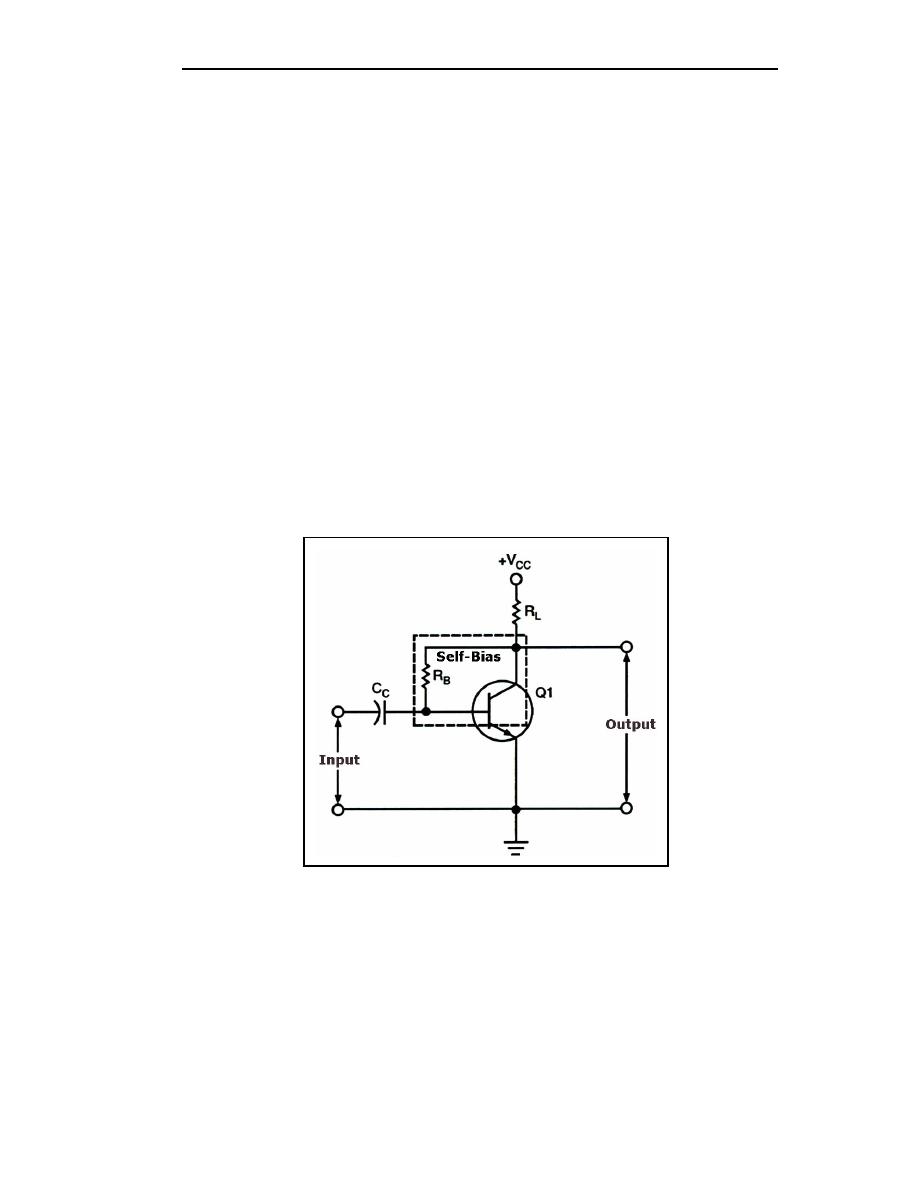
TC 9-62
Self-Bias
2-48. A better method of biasing is obtained by inserting the bias resistor directly
between the base and collector (see Figure 2-15). By tying the collector to the base in this
manner, feedback voltage can be fed from the collector to the base to develop forward bias.
This arrangement is called SELF-BIAS. If an increase of temperature causes an increase in
collector current, the collector voltage (VC) will fall due to the increase of voltage
produced across the load resistor (RL). This drop in VC will be fed back to the base and
will result in a decrease in the base current. The decrease in base current will oppose the
original increase in collector current and tends to stabilize it. The exact opposite effect is
produced when the collector current decreases.
2-49. Self-bias has two small drawbacks. One is that it is only partially effective and
therefore, is only used where moderate changes in ambient temperature are expected. The
second is that it reduces amplification since the signal on the collector also affects the base
voltage. This is because the collector and base signals for this particular amplifier
configuration are 180 degrees out of phase (opposite in polarity) and the part of the
collector signal that is fed back to the base cancels some of the input signal. This process of
returning a part of the output back to its input is known as DEGENERATION or
NEGATIVE FEEDBACK. Sometimes degeneration is desired to prevent amplitude
distortion (an output signal that fails to follow the input exactly) and self-bias may be used
for this purpose.
Figure 2-15. Basic Transistor Amplifier with Self-Bias
Combination Bias
2-50. A combination of fixed and self-bias can be used to improve stability and at the
same time overcome some of the disadvantages of the other two biasing methods. One of
the most widely used combination bias systems is the voltage-divider type (see
Figure 2-16). Fixed bias is provided in this circuit by the voltage-divider network
consisting of R1, R2, and the collector supply voltage (VCC). The DC current flowing
through the voltage-divider network biases the base positive with respect to the emitter.
Resistor R3, which is connected in series with the emitter, provides the emitter with self-
2-16
TC 9-62
23 June 2005


 Previous Page
Previous Page
